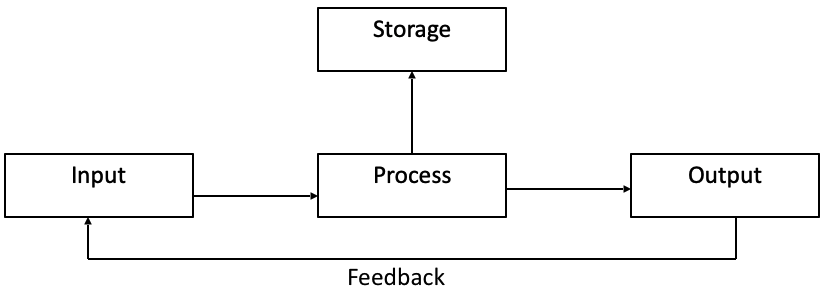Introduction
Information systems refer to hardware and software used to organize, create and distribute data. It finds its basis in information and computing and seeks to improve business models using various computer science algorithms.
Information systems are useful in delivering support and aiding decision making. It comprises of hardware, software, data, people and procedures.
The four main activities are undertaken by information systems (IS) include entering data into the IS (input), changing and manipulating the data in the IS (data processing), getting information out of the IS (output) and storing data and information (storage).
Besides the four main operations, feedback is also needed to return the output to the appropriate people or activities in the organization to evaluate and refine the input (Avison& Fitzgerald, 2002).

Types of information systems
There are several types of information systems which can be applied in various business entities to support business functions. Information systems ease business operations and include, but are not limited, to the following:
- Executive support systems
- Expert systems
- Knowledge management systems
- Transaction processing systems
- Enterprise resource planning systems
- Decision support systems
- Office automation systems
The figure below summarizes the kinds of information systems and highlights the group served.

Transaction processing systems
They support day to day transactions of a business entity which include routine work within the firm. They are mostly used by the bottom level employees to undertake routine tasks.
These include updating store information, uploading of new records like music and conduction specialized searches. Features include data integrity, high performance, ease of use and continuous availability.
Decision support systems
They are mostly used at management level to support decision making. The system gathers information from the environment. This includes information from inventories, sales figures, revenue information, and market assumptions.
The system summarizes all information based on the use of computational models to assist in decision making in aspects relating to forecasting, sales projections, and estimated revenues.
Knowledge management systems
They are used mainly by the data workers to ease their paperwork. The main purpose is to help integrate new knowledge into the business and to help the organization control the flow of paperwork.
Knowledge level systems, especially in the form of workstations and office systems are the fastest-growing applications in business today and are its growth has been propelled by an increase in computer literacy.
Enterprise resource planning systems
These systems refer to superior systems which are all-inclusive. It combines all business functions in one overall system. It integrates the organization’s core departments (marketing, finance, customer service, human resources, and accounting) into one system.
It enables flawless interaction and production between organizations departments. The basic features include shared databases, similar modules and applications are on a real-time basis.
Systems applicable to the record store
Office automation systems (OAS) and customer relationship management (CRM) systems are suitable systems that can be implemented in an online record store.
Office automation systems
The systems facilitate seamless interaction by automating existing office procedures ranging from filing, copying and records management. They are used by operational workers who are at the bottom level of the pyramid.
One of the features is the support of multiple users hence allowing many tasks to be accomplished faster. It supports digital management of day to day tasks that are normally conducted in an office setting. It also requires less storage space to store data.
OAS facilitates speedy retrieval of data and allows employees to perform high-level tasks on a real-time basis.
The main disadvantage of this system is in relation to downtime. If there is an interruption, the online system ceases to work and customers will not access product catalogs and other services.
Operations will be at a standstill. Moreover, employees who are used to manual operations need training and appropriate adjustment to the new system.
Customer Relationship management systems
They manage interactions between the business entity (in this case the record store) and prospective or current customers. It provides summaries of information which are used to handle sales, marketing, customer service, and technical support.
The aim of this system is to reward loyal customers. It seeks to tailor marketing needs based on previous customer purchases. It is also instrumental in improving customer service by collecting as much information about a customer based on their interests.
This provides a customized delivery of marketing information. The main advantage of this system is that it enhances end to end customer experience. A good CRM system entails the use of the following:
- Email integration through automation office campaigns
- Online customer support
- Mobile accessibility
- Telephone customer support
- Reporting options
Conclusion
Information systems are rapidly becoming the backbone of any business entity ranging from the service industry to the sale of goods.
Information Technology has provided a wide array of options in terms of software and hardware to assist business owners to manage information in a more consolidated manner and equally assist in managing business functions more effectively and efficiently.
References
Avison, D. & Fitzgerald, G. (2002). Information System Development. Methodologies, Techniques and Tools. New York, USA: The McGraw-Hill Companies.